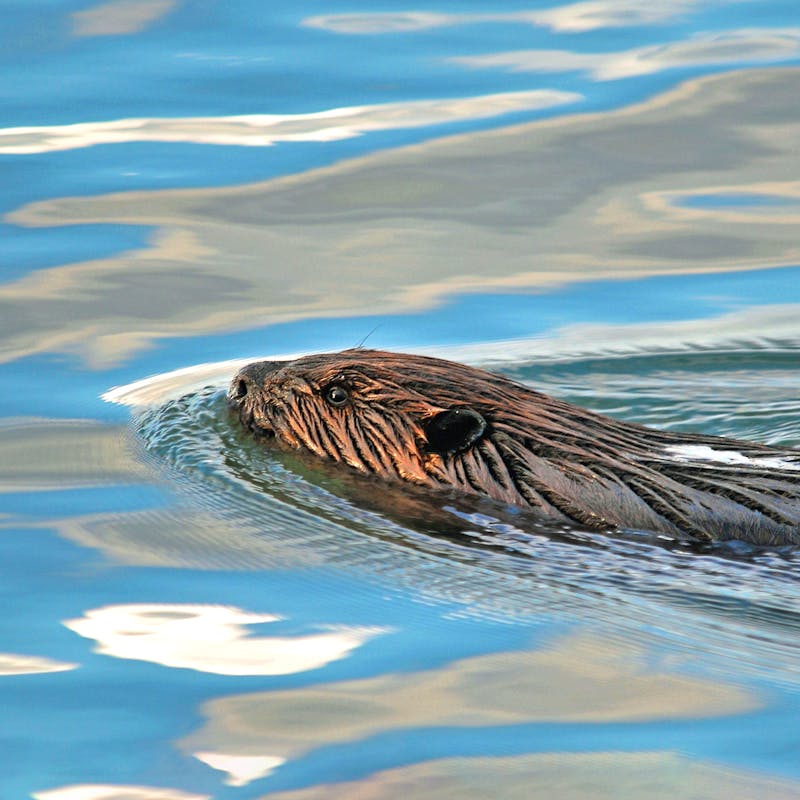Spanning over four million acres of remote, rugged terrain in Idaho’s “high divide”, the Salmon-Challis National Forest is the largest contiguous national forest in the lower 48 states. The Forest’s varied ecosystems, including forests, grasslands and sagebrush, provide important habitat for 148 at-risk species, nine of which are protected as endangered or threatened under the Endangered Species Act. The survival of cold-adapted species, such as the wolverine, bull trout and Canada lynx, is threatened by climatic changes. The Salmon-Challis is also critically important for ensuring connectivity between the Crown of the Continent and Greater Yellowstone ecosystems, and serves as a gateway for grizzly bears returning to the Bitterroot Recovery Area.
Climate change is an overarching stressor for all national forests and habitats around the world. This week, the Intergovernmental Panel on Climate Change (IPCC) released a Special Report on Climate Change and Land, which examines the effects already being felt, the potential for land to be part of the solution and the timeframe in which we need to act. Not only is the warming itself problematic for at-risk species and the plant life that forms the base of the ecosystem, it also exacerbates other stressors in the forest system such as disease and insect infestation and increases wildfire severity and frequency. These changes will deeply impact the capacity for some species to exist in the region, especially species like the wolverine, which rely on thick snowpack for denning, and the bull trout, which have a low thermal tolerance.
The Forest Planning Process
Each individual forest develops forest plans to guide the next decade of management and activities, and these are essential for increasing the adaptive capacity of species and habitats vulnerable to climate change. In 2012, the U.S. Forest Service released new rules for conducting planning on all of America’s national forests. This Planning Rule includes guidance on how to plan for, and adapt to, the effects of climate change on national forest resources. To help forest managers and the public to navigate the Planning Rule’s new provisions regarding climate change, Defenders has released a “Planning for Climate Change” report, which illustrates the adaptation measures found in the rule.
Revising the Salmon-Challis National Forest Plan
In 2017, the Salmon-Challis National Forest began the process of revising their forest plan. Given the importance of the Salmon-Challis to wildlife facing the perils of climate change, Defenders is engaging on this issue and speaking up for the wildlife that cannot speak for their own home.
In July 2018, the U.S. Forest Service released the Salmon-Challis National Forest Assessment, the first of three phases required to revise the Salmon-Challis forest plan under the 2012 Planning Rule.
The forest planning process is informed by the best available scientific information. To better understand and mitigate the impacts of climate change on at-risk species and habitat, the Salmon-Challis forest assessment draws on the work of the Intermountain Adaptation Partnership (IAP). The IAP produced a vulnerability and adaptation to climate change report, which the Forest Service use as their primary source for the best available science in the region.
The IAP was created by the USFS to find climate change vulnerabilities and give best practices to adapt to them. Their report focuses on large scale ecosystems and thus lacks site- and species-specific adaptation plans. As the planning process moves forward, the Salmon-Challis should work collaboratively with the IAP and other bodies such as Defenders to bring more specific information about affected habitats and species. This type of planning will bring more species and habitat specific more in tune with what the species of conservation concern deserve.
The IAP report focused on ecosystems and thus lacks site- and species-specific adaptation plans. As the planning process moves forward, the Salmon-Challis should work collaboratively with the IAP and other climate adaptation experts to bring more specific information about affected habitats and species. Additionally, the Salmon-Challis planning process would benefit from a breakdown of what are the most essential adaptation techniques and their physical and economic feasibility to ensure resources are used efficiently. Defenders’ “Planning for Climate Change” may serve as a guide for helping the forest develop appropriate resistance, resilience and transformation strategies.
However, some important findings were mentioned in the Salmon-Challis National Assessment:
Aquatic and Riparian Habitat
The Salmon-Challis relayed the information from the IAP in their assessment, suggesting the most hard-hit ecosystems would be aquatic and riparian, because of changing snowpack melt. IAP’s recommended adaptation strategies include maintaining and restoring beaver populations, which exert a positive influence on aquatic ecosystems through their dams, increasing wetland connectivity and riparian area, as well as the monitoring and control of invasive riparian and aquatic species.
Wolverines and Snowpack
The IAP report also examined the vulnerability of wolverines to population fragmentation caused by climate change. The Salmon-Challis wolverine populations are especially susceptible to isolation through fragmentation. The assessment indicated only 1% of the Forest area is suitable alpine habitat, and this could shrink 63% by 2100, which is why adaptation measures like increasing alpine connectivity are key to maintaining the species’ viability in the area. The assessment recognizes that more profound human interventions may be necessary to support the persistence of wolverines in the Forest, such as use of artificial snow.
Bull Trout and Water Temperature
Species adapted for cold conditions, like bull trout, will also face vulnerabilities in the short term with quickly changing aquatic temperatures. The IAP’s primary adaptation strategies for them focuses on restoring the function and structure of aquatic systems. The Salmon-Challis in turn assessed areas for critical habitat refugia for the bull trout and should include in their plans objectives to improve habitat quality and increase connectivity.
Later this year, the Forest will release a proposed revised forest plan, which should include climate adaptation strategies for at-risk species and habitats. With a quickly warming climate the Salmon-Challis will face major challenges in helping their most vulnerable species adapt. Despite that, suitable adaptation plans based on the principles of the Planning for Climate Change report and the best available science can increase chances of survival for imperiled species. The Salmon-Challis planning process provides an opportunity to adapt and restore the forest and to increase the general resiliency of all species and ecosystems. Defenders is engaged every step of the way to fight for habitat that can continue to support species as our climate changes, but also habitat that has the ability to mitigate or be part of the solution for climate change.

















Follow Defenders of Wildlife
facebook bluesky twitter instagram youtube tiktok threads linkedin